This page last revised: 6-15-2024
Gastropods
Family Margaritidae & Solariellidae
Click on photo to enlarge. Scale line in photo equals 1cm unless otherwise specified.
* Species which are commonly encountered on the beach.
Margaritidae Petersburg, AKMargarites "beringensis" (E.A. Smith, 1899)Bering Margariteintertidal
to subtidal Vancouver Island, BC to
Alaska size to 10mm
Petersburg, AKMargarites "beringensis" (E.A. Smith, 1899)Bering Margariteintertidal
to subtidal Vancouver Island, BC to
Alaska size to 10mm
This
is occasionally found intertidally. It is a glossy, dark brown,
squat shell. Some sources list this as synonymous with M. helicinus.
The two species can be found together in the same habitat, but
are readily distinguished from each other. This one is darker and
more squat in height than the other. [The identity of this shell is in
question. Since this name is considered a synonym of M. helicinus and that species is not considered to exist where these have been found, we're unsure of its identity.]
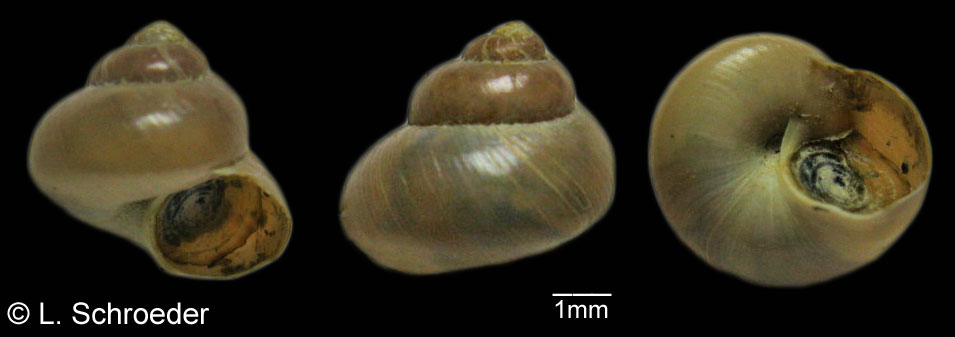
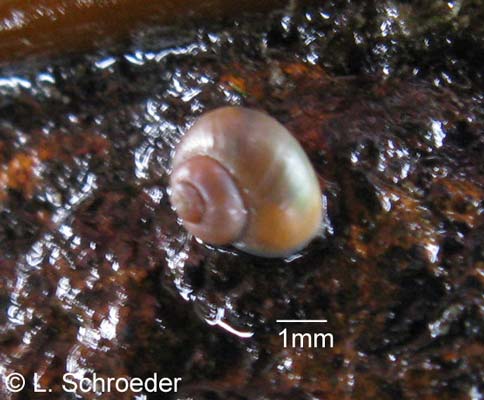
Petersburg, AK
Petersburg, AK, intertidal
Margarites "helicinus" Phipps, 1874Helicina Margariteintertidal
to 182m southern California to
northern Alaska; Arctic Ocean size to
10mm
This
is occasionally found intertidally, especially in its northern range.
The shell is smooth, lightly glossy and may be light to medium
brown. It has a higher spire than M. beringiensis. [M. helicinus is no longer considered to be present on the west coast south of the Aleutians. This is currently called Margarites olivaceus marginatus. More work needs to be done on the species.]
(synonym - Margarites marginatus)
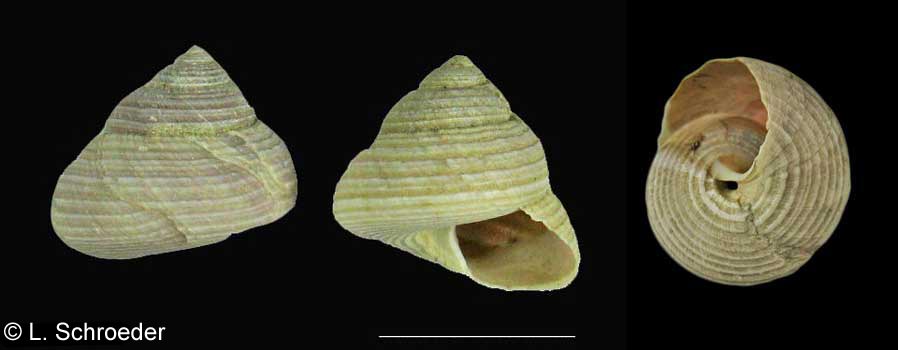
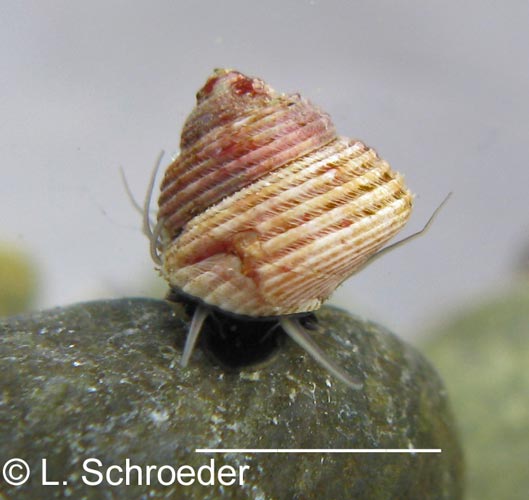 Whiskey Creek Beach, WA
Oak Bay, WA, intertidal
Whiskey Creek Beach, WA
Oak Bay, WA, intertidal
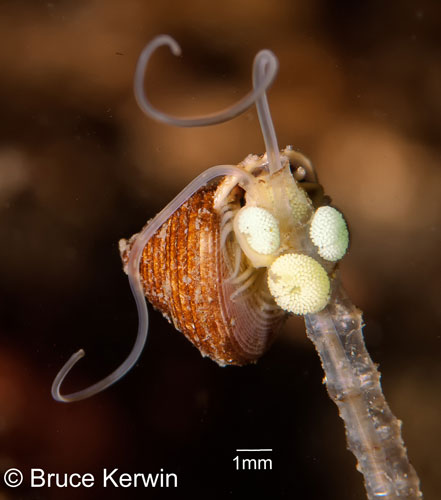 off Bainbridge Island, WA, subtidal,
off Bainbridge Island, WA, subtidal,
appears to be eating the eggs of a Lacuna on a Jointed Tubeworm
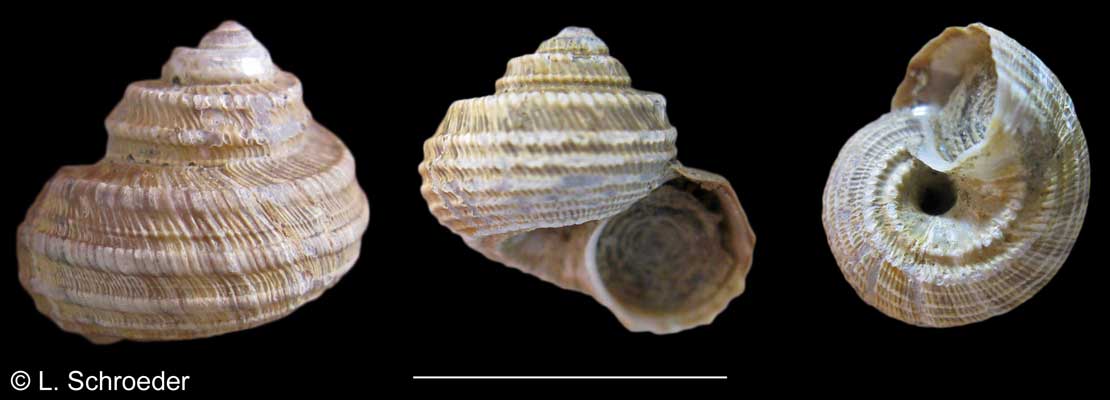
Departure Bay, BC
Minolia peramabilis (Carpenter, 1864)
Lovely Pacific Solarelle
subtidal,
15-600m northern Mexico to central
Alaska; Japan size to 20mm
This shell has prominent spiral ridges and a deep umbilicus.
(Previous names - Solariella peramabilis, Solariella rhyssa)
Solariellidae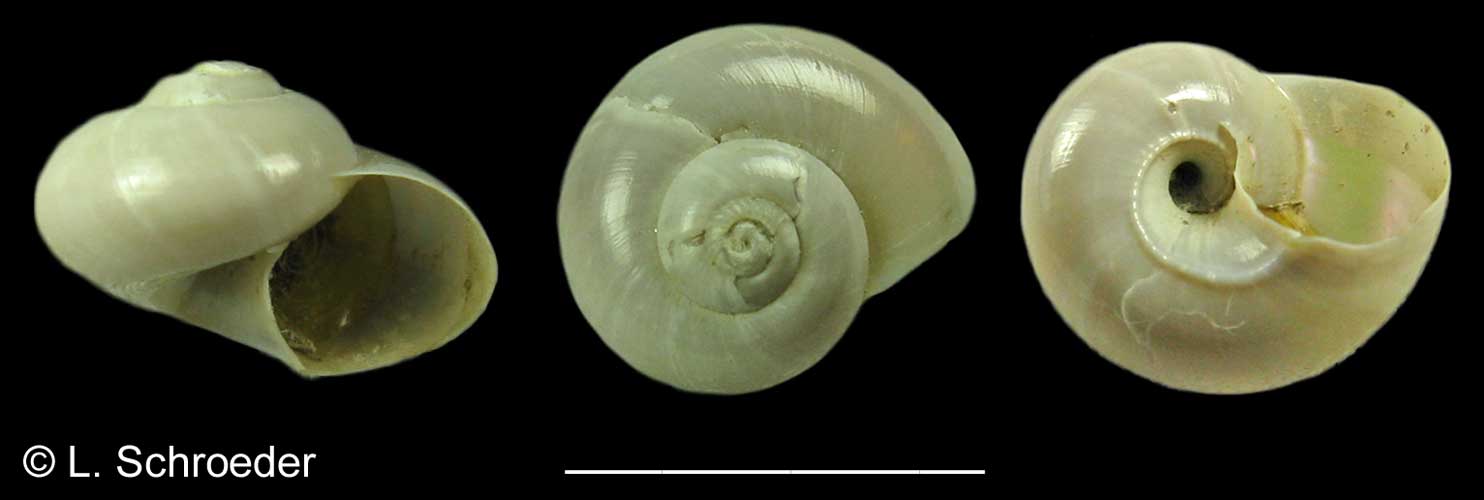 off southern Oregon coastChronospeira nuda (Dall, 1896)Naked Solarellesubtidal
to 915m north Mexico to Vancouver
Island, BC size to 20mm
off southern Oregon coastChronospeira nuda (Dall, 1896)Naked Solarellesubtidal
to 915m north Mexico to Vancouver
Island, BC size to 20mm
This shell is grayish-white and almost completely smooth.
(Previous name - Solariella nuda)
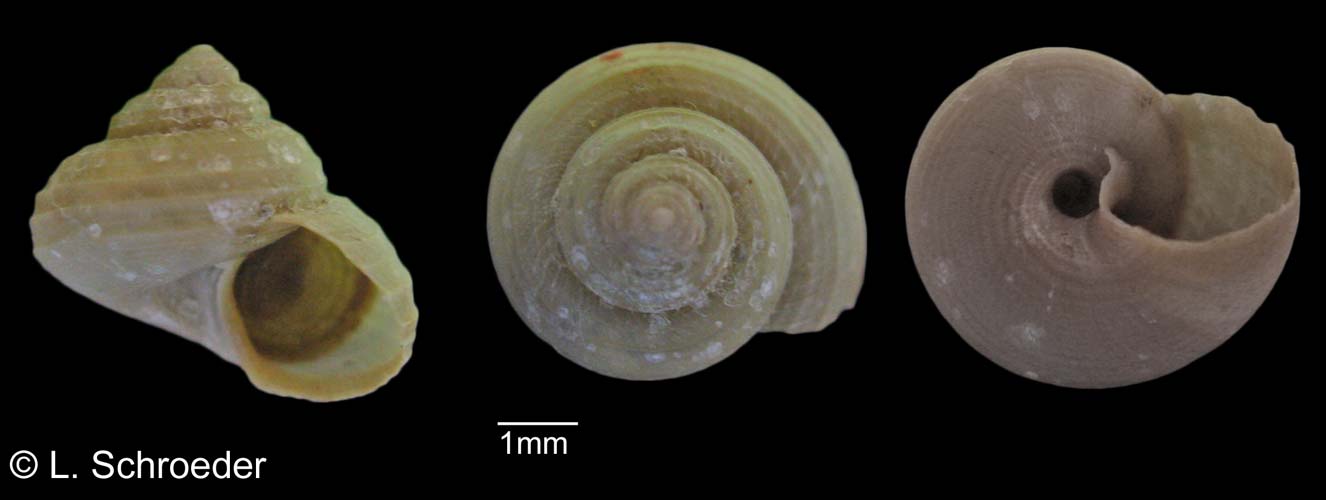 Nova Scotia, CanadaSolariella obscura (Couthouy, 1838)Obscure Solarellesubtidal
to at least 730m Arctic seas; North
Pacific; North Atlantic size to 13mm
Nova Scotia, CanadaSolariella obscura (Couthouy, 1838)Obscure Solarellesubtidal
to at least 730m Arctic seas; North
Pacific; North Atlantic size to 13mm
The color may be grayish to pink-tan. This species has thin spiral cords with very fine spiral grooves on the base.
(previous names - Turbo obscurus, Margarita obscura, Machaeroplax obscura) 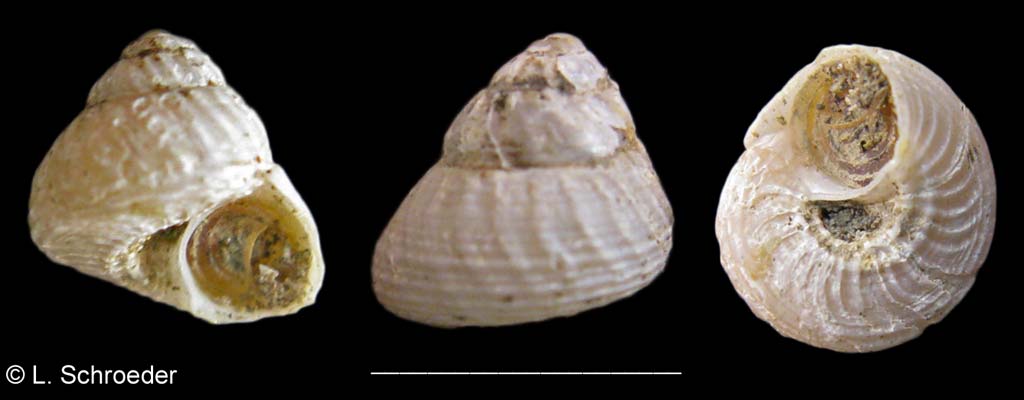 Victoria, BCSolariella varicosa (Mighels & Adams, 1842)
Victoria, BCSolariella varicosa (Mighels & Adams, 1842)
Varicose Solarelle
subtidal to 393m size to 14mm
southern California to Alaska; circumarctic; north Atlantic - eastern Canada and EuropeThis shell has a yellowish white color. It has slight spiral ridges and more prominent
wavy vertical ridges.
(previous name - Margarita varicosa; synonyms - Margarita elegantissima, Margarita polaris, Margarites pauperculus)
Margarites pupillus (Gould, 1849)
Puppet Margarite *
intertidal
to 100m southern California to
northern Alaska size to 20mm
This is commonly found intertidally. In most of its range the shell is small, around 10mm
or
less. It is light gray to pink in color and the interior may be
pinkish. The shell has low spiral ridges and a distinct umbilicus
on the underside of the shell which helps distinguish it from
young Calliostoma ligatum. In the northern part of its range, the shell grows much larger and
the umbilicus may close over as the shell thickens. Worn shells become an irridescent silvery-pink color.
(synonyms - Trochus pupillus, Margarites salmoneus)









